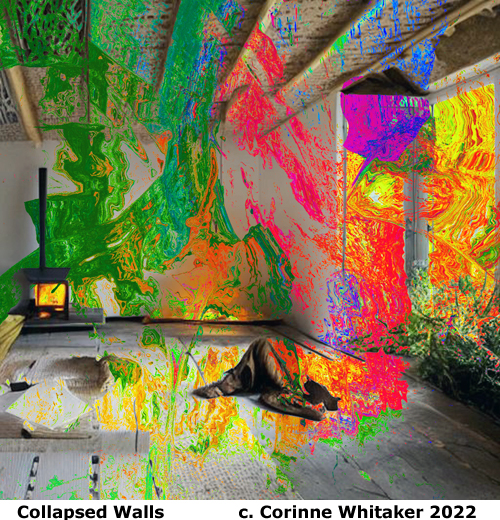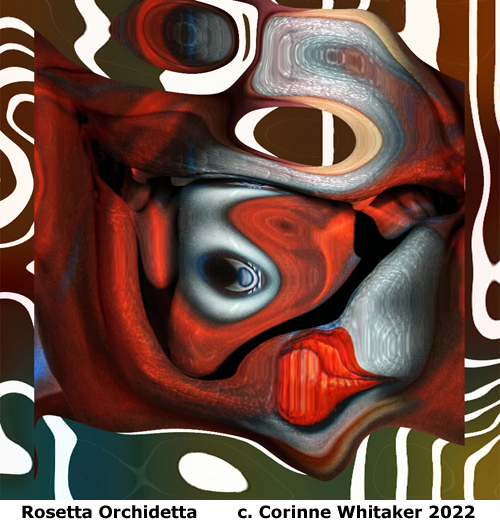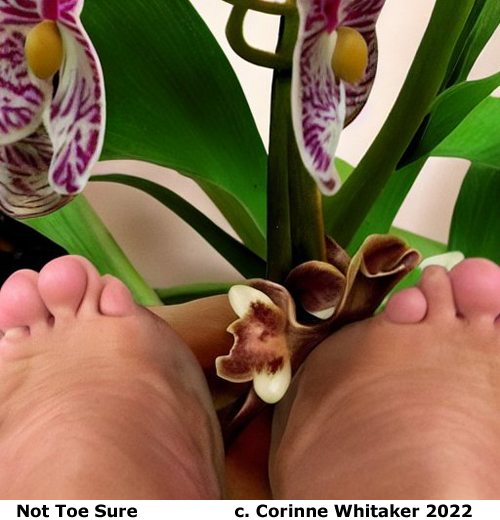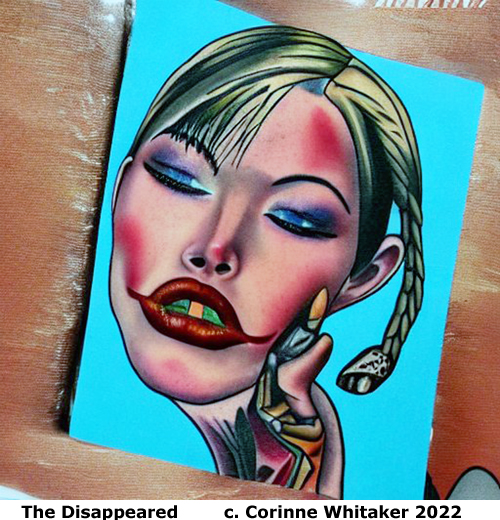
Chickamunga Takes a Wild Ride

Saddle up, folks. Grab those cowboy boots and prepare to charge into the new Wild West. Not Montana. Not North Dakota. This frontier starts with verbs and adjectives and could end with a bit of your elbow or a snip of your toes. I'm talking about the new text-to-image brouhaha unfolding, or rather exploding, right under our noses. How did we get here? It's a rough journey, but it starts with language, or rather silence.
We have talked in the past about silence vs. noise. What about presence vs. absence? Martin Heidegger once asked, "Why is there something rather than nothing?"
Whereas I ask, "Why are there so many somethings?" And of course nothing is a something in its own right. Right? After 88 years of watching and wondering about that something, that phenomenon, called "human", I have decided to give myself an advanced degree: D.Ph., Devotee of Phenomenology. Now, instead of 4 male authors who appear in Wikipedia under "Phenomenology", there should be a female claiming a place.
Let's start phonomenalizing by questioning two presences, the Fulani and Krepildockerschpe, both difficult to pronounce and unfamiliar to most tongues, meaningful to some and puzzling to others.
We will start with the Fulani, a nomadic pastoral group living across West Africa and along the Red Sea. They cover as many as 20 countries and number perhaps 50 to 60 million folk. Their language was oral, without a written script. Sometimes they used Latin characters, sometimes Arabic, improvising in both. (1)
One day, a pair of brothers decided to create a written language to match the spoken words. Eventually they came up with 28 letters and 10 numbers, written right to left. Soon they had to add 6 more letters. They called the script ADLaM. They created a group named Winden Jangen. One brother was arrested, without charges, so they moved to Portland, Oregon, while others were teaching the script in Guinea, Senegal, Gambia and Sierra Leone. They hired a company to build a keyboard and font for ADLaM, and thus invented a new writing system.(6)

Once I invented a language called Eskaloop, then another called Zoberflux in which all of the words began with the letter Z to represent the end of an old language of vision and the start of a new digital iconography. I have also been making up words for decades. Many existing words simply don't work for me. What they mean to others is not what they mean to me. So I make up words. No one can challenge them, challenge me, because I'm the only one who knows what they mean.
Sometimes I don't know what they mean either. But that's okay. The unknown is where I thrive.
Survive

Arrive.
At infinity.
At Krepildockerschpe. (4)

How many people speak Krepildockerschpe? I don't know, but I know at least a dozen who have already giggled when they first heard it spoken. (5)
Many years ago a tiny 2-year-old granddaughter greeted me with these words: "I love you Chickamunga." That's a Krepildockerschpe moment.
The human mind is extraordinary, its capacity to invent and communicate exceptional. You may never know exactly what Krepildockerschpe means. But we both know how it feels: it invokes smiles, memories of childhood, happy discussions of language games. Maybe it will start a new method of communication; maybe not. Maybe it will make a dent in the world. Maybe not.
It might bring a smile to your world - and yours - and yours. It might even bring you a Krepildockerschpe moment of your own. Or you might gift it to a loved one. That's dent enough for me.

But words magically unfolding into unexpected images? That may dent our view of reality in a startling way. Thanks to A.I. and its continuous scanning of billions, with a B, of pictures from all over the Web, we are now able to conjure up unimagined images, much like scrambling words in a centrifuge and pictifying the results. This new Wild West turns verbal and visual into turvy and topsy, crushing copyright under the thundering hooves of advanced technology. Already confusion and outrage are simmering among engineers and researchers. Who owns what? Is this stealing? Who is the thief? How do we understand, translate, this new imagery? You can expect a tsunami of charges and countercharges, followed by lawsuits. Copyrights allowed us to erect walls around our creations. Text-into-images brings us a new language, a new visual landscape, the wildest yet of all Wild Wests. Saddle up, my friends. We are in for a quite a ride.
Corinne Whitaker D.Ph. 2019/2022

(1) "Can an alphabet save a culture?"
(2) "Top Ten Rarest Languages"
(3) "The Hardest Chinese Character" - a fascinating tale.
(4) Chamicuro
(5) Krepildockerschpe (Note: I have just learned that krepildockerschpe is a traditional dish from the Achterhoek area in the Netherlands. It is usually eaten around Saint Martin's Day (11 November), and is made from bread, ham, eggs, and cheese. I had never known this and am certain I had made up the word. Another word I thought I had made up is Tippelskirchi, which turns out to be Swedish for The Thumb Church. Both of these then turned out to be false information, from Meta's large language model that lasted exactly 3 days on the Internet. Called "Galactica", it was severaly criticized by the scientific community because it "mindlessly spat out biased and incorrect nonsense". Can I now reclaim authorship to my words?)
(6)Here is an example of AdLam. You can also scroll down and watch a new language as it is devised.
All of the images in this article were originally created in algorithms that turn words into images. But which words I chose, and how I digitally reimagined them, remains a mystery even to me. It's who I am, you see. I find it fascinating that one of the A.I. algorithms contains this observation: "models are prone to hallucinate text". Love it!
front page , new paintings, new blobs, new sculpture, painting archives, blob archives, sculpture archives, photography archives, Archiblob archives, image of the month, blob of the month, art headlines, technology news, electronic quill, electronic quill archives, art smart quiz, world art news, eMusings, eMusings archive, readers feast, whitaker on the web, nations one, meet the giraffe, studio map, just desserts, Site of the Month, young at art,
want to know more about the art?
about the artist?
copyright 2009 Corinne Whitaker
